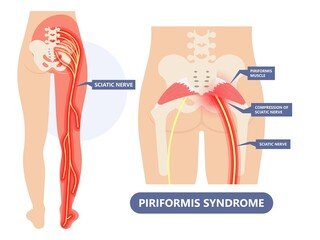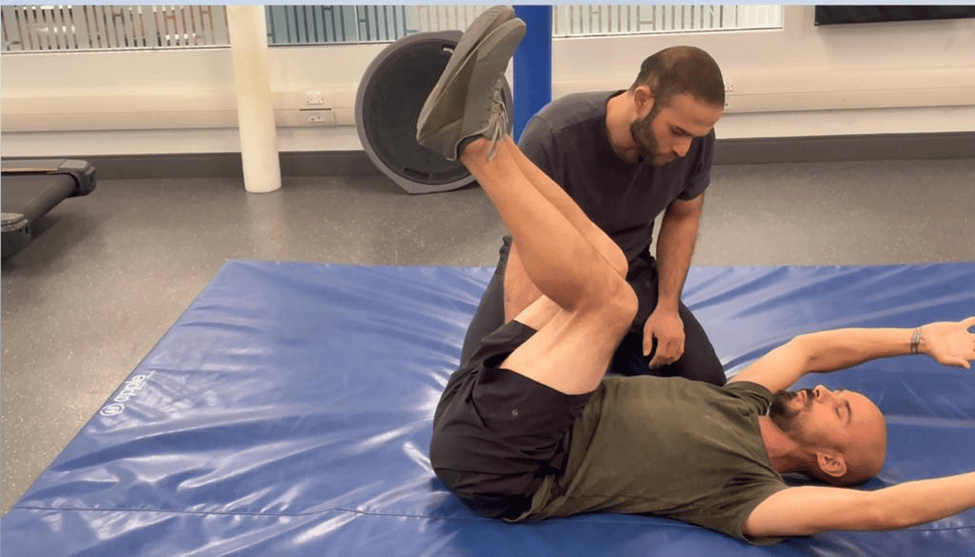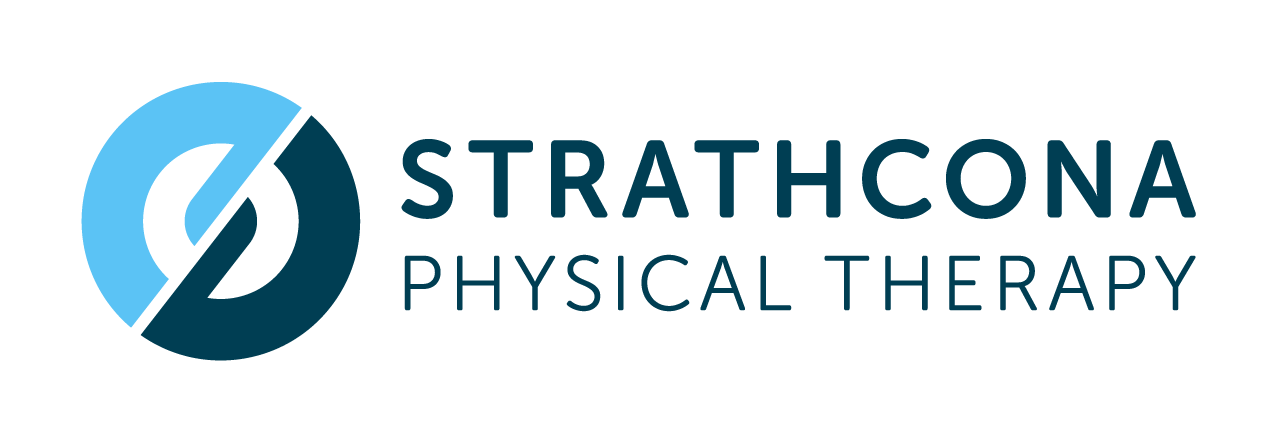
Evidence-Based Physiotherapy for Disc Herniation: A Comprehensive Guide
Disc herniation, commonly referred to as a 'slipped disc' or 'ruptured disc,' is a frequent cause of back and neck pain, affecting a significant number of adults worldwide. The condition occurs when the gel-like nucleus of an intervertebral disc leaks out, often compressing nearby nerves and causing pain, numbness, and weakness. While surgical intervention remains an option for severe cases, physiotherapy has increasingly become the go-to treatment for many patients and clinicians alike. This blog post aims to explore the evidence-based physiotherapeutic approaches that have been proven effective for treating disc herniation.

Understanding Cervicogenic Headaches: Causes, Symptoms, and Treatment Options
Cervicogenic headaches may not be as well-known as tension or migraine headaches, but they can be just as debilitating. These headaches originate from issues in the neck (cervical spine) and are caused by an underlying condition, making them a distinct type of secondary headache. In this article, we delve into the world of cervicogenic headaches, exploring their causes, symptoms, and treatment options.

Navigating Exercise While Managing Eating Disorders: A Balanced Approach
Discover how to navigate exercise while managing eating disorders, with expert advice on setting boundaries, practicing mindfulness, and prioritizing mental and physical health for a balanced lifestyle.

Evidence for Physiotherapy Intervention for Prevention of Running Injuries
Explore the compelling scientific evidence that highlights the effectiveness of physiotherapy interventions in preventing running injuries. From biomechanical analysis to multi-disciplinary approaches, discover how physiotherapists can help runners stay injury-free.

Rheumatoid Arthritis: Diagnosis, Progression, and the Beneficial Impact of Physical Activity
Learn about the diagnosis of rheumatoid arthritis and discover how tailored physical activity regimens can be a key component in managing the disease, improving joint function, and enhancing overall quality of life for individuals with RA.

Contact Sports: Navigating Brain Health and Degenerative Disorders
Explore the complex relationship between contact sports and degenerative brain disorders, with a focus on Chronic Traumatic Encephalopathy (CTE). Learn about the symptoms, mechanisms, and crucial safety measures to safeguard brain health for athletes in these physically demanding sports.

Understanding Piriformis Syndrome - The Persistent Buttock Pain
Explore the causes and symptoms of piriformis syndrome, a condition that can mimic sciatica. Discover how physiotherapy can play a crucial role in managing the syndrome through stretching, strengthening exercises, manual therapy, posture education, and more.

Muscle Weakness and its Negative Health Outcomes
Delve into the world of muscle weakness, its potential negative health outcomes, and the latest research findings. Learn how resistance training, adequate protein intake, a balanced exercise routine, proper rest, and addressing underlying conditions can help combat muscle weakness and improve overall well-being.

Dance Movement Therapy: A Holistic Approach to Chronic Pain
Explore the world of Dance Movement Therapy (DMT) as a holistic approach to chronic pain management, backed by recent scientific research. Learn how DMT combines physical movement, emotional release, and cognitive awareness to reduce pain intensity, improve physical function, and enhance overall well-being. Discover the potential of DMT as a complementary therapy for chronic pain, promoting self-expression, creativity, and self-care.

Loading-induced Cartilage Regeneration: A Promising Approach for Joint Health
Discover the potential of loading-induced cartilage regeneration as a promising approach to improve joint health and combat degenerative conditions like osteoarthritis. Recent research findings highlight the positive effects of mechanical loading through exercise and innovative devices on cartilage structure and chondrocyte metabolism. Explore the complex mechanisms behind this process, offering hope for targeted therapies in cartilage-related disorders.

Movement/Exercise Therapy for Schizophrenia
Schizophrenia is a complex mental illness with various cognitive, emotional, and social challenges. Movement therapies, including Dance Movement Therapy (DMT), creative group classes, and creative yoga programs, can play a crucial role in managing symptoms and improving the quality of life for individuals with schizophrenia. Discover how holistic movement programs can address physical, cognitive, and emotional symptoms in this population.

Loading-induced Cartilage Regeneration
Cartilage degeneration, often seen in conditions like osteoarthritis (OA), can lead to severe joint dysfunction and pain. Recent advances in arthritis treatment suggest that optimal mechanical loading, a specific type of movement that considers various factors, may promote cartilage regeneration. While the cellular mechanisms behind this process are not fully understood, studies have shown promising results in improving cartilage health through loading-induced therapies. From glycosaminoglycan content improvement to electrical and piezoelectric stimulation, these innovative approaches may change the landscape of arthritis management. Explore the potential of optimal loading for cartilage regeneration and its implications for arthritis treatment.

Dance Movement Therapy (DMT) for chronic pain
Discover how dance therapy can be a transformative approach for individuals with chronic pain. Learn about the fear of movement and body dissociation common in chronic pain sufferers and how dance therapy aims to reshape these perceptions. Explore the integration of motor, sensory, cognitive, and emotional systems in dance therapy, fostering body awareness and positive self-perception. While evidence for dance therapy is limited, studies show potential benefits such as decreased movement pain, increased body awareness, and improved overall well-being for chronic pain patients.

Muscle Weakness is biologically linked to negative health outcomes related to ageing
Discover the intriguing connection between grip strength and aging as we delve into a groundbreaking study that uncovers the role of DNA methylation age acceleration in understanding the impact of muscle weakness on overall health. Explore the implications and learn how strength training can be a key factor in promoting longevity and well-being.

Piriformis Syndrome - a nagging pain in the butt
Explore the complexities of piriformis syndrome, an unusual source of lower back and buttock pain that can affect daily activities and sports performance. Learn about the signs, symptoms, and potential causes of this condition, as well as evidence-based strategies for rehabilitation and recovery.

Degenerative Brain disorder and Contact Sports
The US National Institute of Health (NIH) has officially recognized the connection between repetitive mild head trauma and the development of chronic traumatic encephalopathy (CTE). This revelation brings to light the impact of repetitive blows in contact sports and raises important questions about brain health in athletes and beyond. Explore the evolving understanding of CTE, its clinical challenges, and the complex interplay of genetics and environmental factors in its development.

If A Thing Is Worth Doing, It’s Worth Doing Badly.
Embrace the wisdom of G. K. Chesterton's quote, "if a thing is worth doing, it’s worth doing badly," as a reminder that imperfect action is still progress. Discover how taking small steps, even at less than 100%, can lead to meaningful change and help you overcome obstacles on the path to your goals.

What Is The Best Exercise?
Discover the key to a sustainable fitness routine: choosing an exercise you genuinely enjoy. Explore the idea that there's no one-size-fits-all answer to the "best" exercise and learn how to select activities that align with your preferences, accessibility, and intensity goals.

Low Back Pain: Joint Mobilizations Manipulations
Dive into the world of joint mobilizations and manipulations as effective therapies for low back pain. Discover how these hands-on techniques can improve joint mobility, reduce pain, and help individuals regain their normal daily function. Explore the evidence supporting their use and the importance of seeking professional guidance for appropriate treatment.

Does your Knee Pop or Crack During Movement?
Discover the truth about knee noises, from cracking and popping to grinding and clicking. Learn how to distinguish between normal joint sounds and abnormal ones, and find out when it's essential to consult a healthcare professional for knee issues. Explore the impact of knee crepitus on anxiety and the science behind joint cracking.
